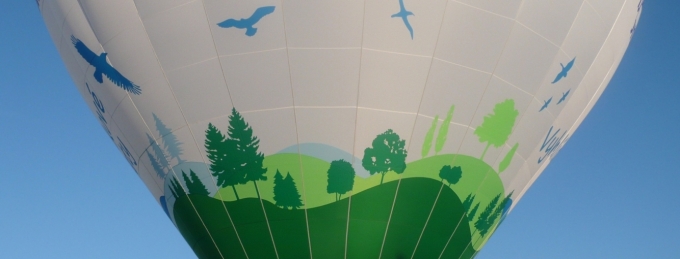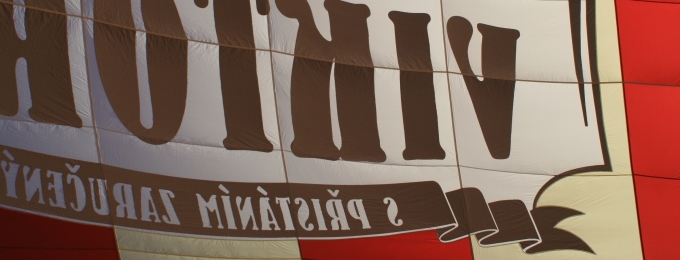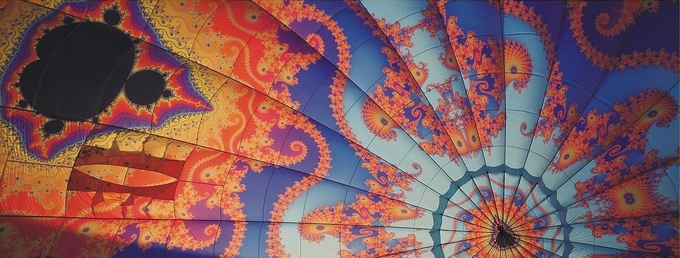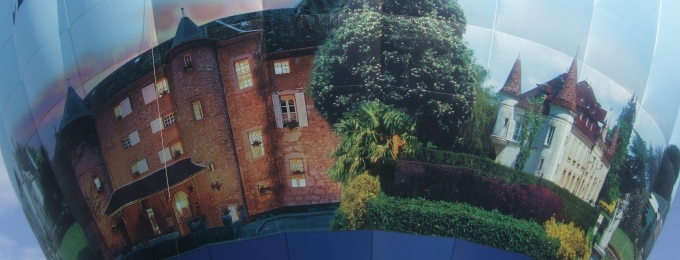Beauty of balloons is its large area usually carrying some kind of a graphic design. Either the owner's or sponsor's logo, or an enlarged piece of art.
By combining different techniques, we are now able to transpose any theme or graphical element onto your new balloon. It all depends on your taste and available budget. There are four basic technologies used for balloon graphics:
Overlaid Artwork
This is the most common and basic option. Graphical elements are cut to certain shapes from different fabric colors. Then they are sewn on to individual panels. Overlaid artwork is mainly used for lettering, logos, and elements with distinctive outlines and colors. Its advantage is the simplicity and subsequent take out of the graphics (e.g. after contract completion). Disadvantage would be a slightly heavier envelope.

Inlaid Artwork
Graphic is sewn into the fabric. This is then cut to parts, which are later sewn together completing one panel made of different colors. Using this method gives us lighter weight. On the other hand, the work on the balloon gets a lot longer, which increases the final price. Since it is more difficult to take this kind of grpahic out of the envelope, it is used for large lettering (exceeding 3 m), logos, etc.

Digital Print - PhotoArt2
For placing a photograph (either a real photo or a complex logo with shades and color transitions) is used a particular technology of sublime printing. It allows us to print an arbitrary motiv based on bitmap graphics. This unique technology colors the fabric fiber itself and the printing becomes inseperable part of an envelope. It is distinguished by long-lasting color stability and mechanical solidity.
An advantage of this method is an absolute freedom of graphical imagination. At the same time a high definition original pattern is needed as well as higher budget. Usually the printed panels are sewn in, but could be patched on as well - depending on particular case. This method of printing is not suitable for polyamid fabric, since it shortly faces a temperature of 210°C (410°F) while in the process.












 Kamila, assistant
Kamila, assistant Ivo, salesman
Ivo, salesman Martin, salesman
Martin, salesman Milan, salesman
Milan, salesman David, sales manager
David, sales manager Petr
Petr Ondřej, service & after-sales care
Ondřej, service & after-sales care Radim, chief-designer
Radim, chief-designer Radim, executive director
Radim, executive director